I’ll be the first to admit that when using my digital SLR camera, I can become a little narrow sighted and stuck looking at the world in a 3:2 aspect ratio.
However, when I come across a scene that cries out to be photographed as a panoramic, I like to think that I’m up to the challenge. So, what’s the easiest way to take multiple images and blend them together into a panorama that you can be proud of?
Photoshop makes it incredibly easy to stitch multiple images together to create a panorama from scratch and the best part is Adobe Photoshop CS5 does an amazing job that I honestly can’t fault, which can’t be said for older versions of the software.
In fact it does such a great job that you’ll almost never need to position your lens directly over its nodal point and that’s pretty impressive. The process of capturing and creating a panorama is fairly straight forward as your about to find out:
1. ) Capture Series Of Overlapping Images
Start by capturing multiple images of the same scene using a tripod and making sure that they all overlap evenly and were shot using the same exposure settings.
If you wish to use a Motion Control Head or a Pan Tilt Bracket they will provide you with more precision and options for creating not only panoramas but time-lapse videos.
2. ) Open Bridge & Select Sequence Of Images
Open Adobe Bridge and begin browsing to identify which images would be ideal for superimposing to create your panorama.
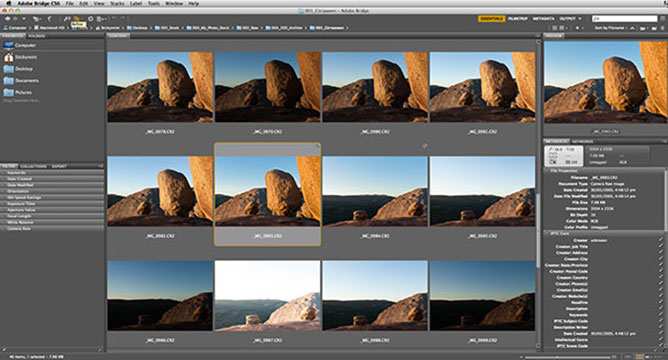
Keeping in mind that the alignment, movement and exposure of each frame can influence how realistic and seamless the end result.
After labelling and rating your files, select them by holding down the Ctrl (Windows) or Command (Mac) key and clicking on each photo. Then import your images into Photoshop by right-clicking on the selection and choosing open with Camera Raw.
3. ) Edit Images Within Camera Raw Or Lightroom
Open and edit all images identically within Adobe’s Camera Raw. Save all images with the same resolution, color profile working space and file format to ensure consistency.
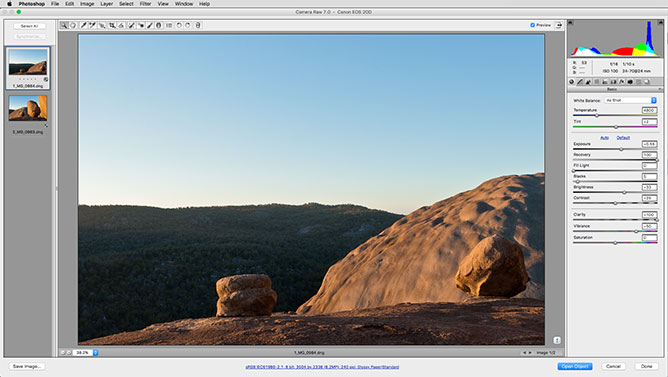
Finally, open all of your saved images within Photoshop.
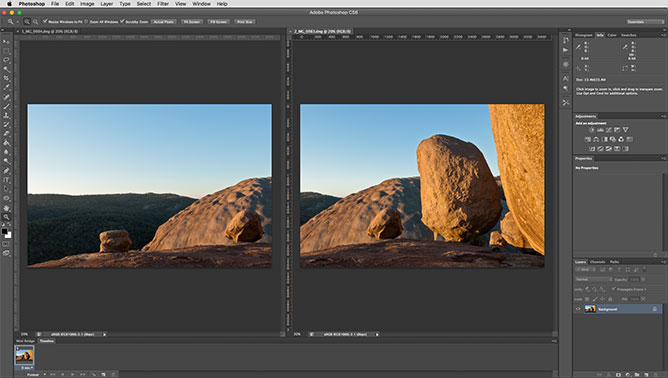
4. ) Open Photomerge In Photoshop
In Photoshop go to the main navigational menu and select… File / Automate / Photomerge…
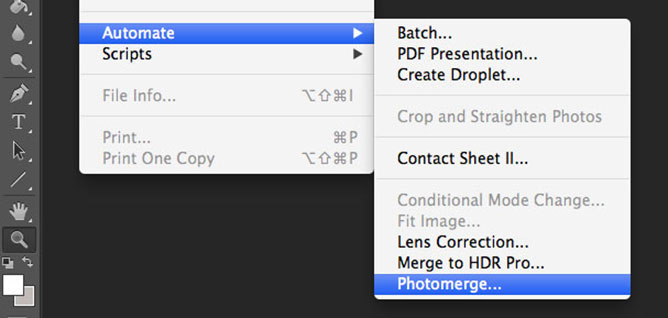
Once the photomerge dialog window appears you’ll be asked to select and open all the images that go together to make up your panorama.
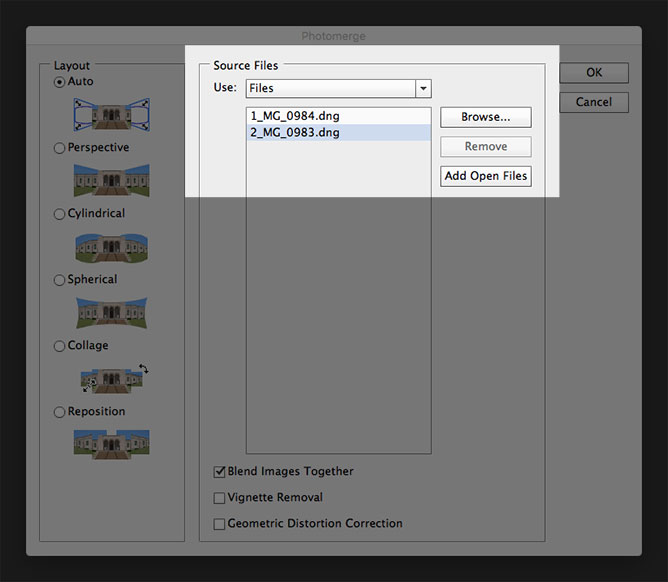
5. ) Select Layout Option
In the layout settings, select the type of panorama you’re creating. In most cases, you can get away with using the “auto” option, unless of course you know exactly what type of lens distortions are within your photographs.
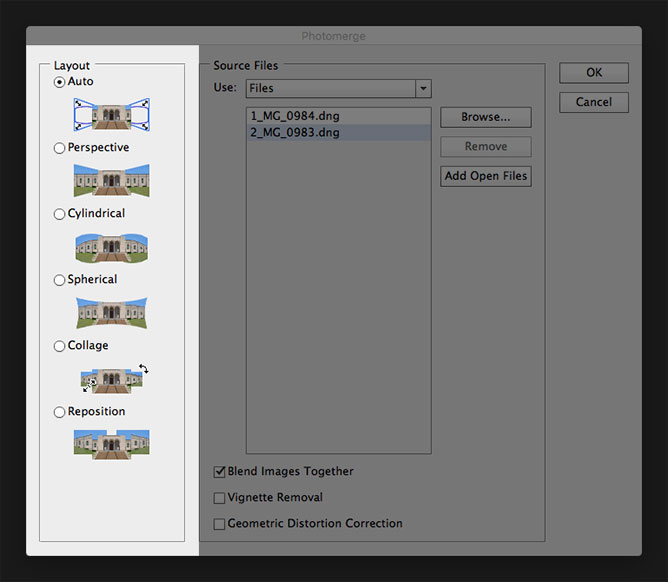
Finally, make sure you have “Blend Images Together” checked and then choose whether or not you would like “Vignette Removal” and/or “Geometric Distortion Correction” applied. Then click “OK”.
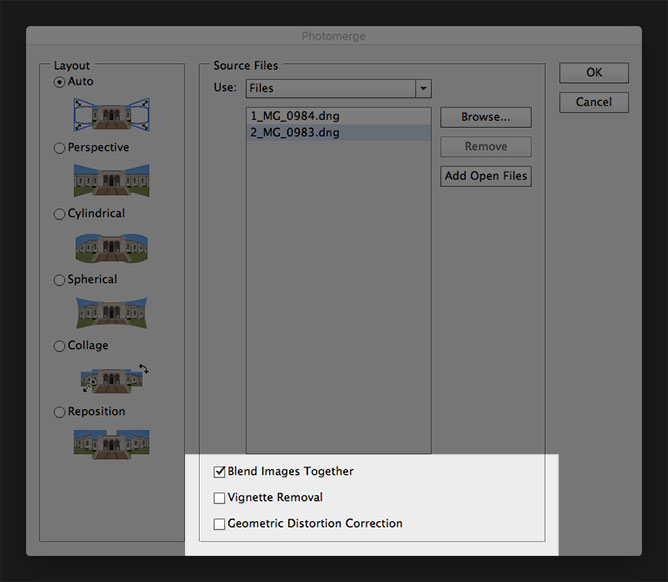
6. ) Check For Imperfections
Double check the quality of the merge and look for any imperfections that may have occurred in the stitching process that require your attention to fix. In most cases you will need to view your image at 50-100 percent in order to visually find any problem areas.
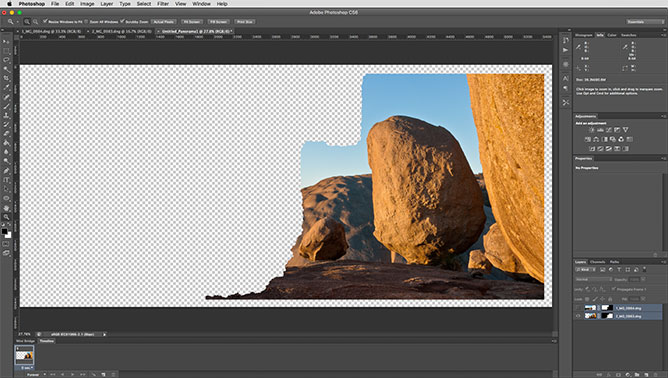
If you focus your attention predominantly around where the images have been stitched together you can’t really go wrong. By turning off individual layers you’ll be able to see where the layer masks connect.
7. ) Crop Image
One of the common problems you may face with your panorama is that your image maybe missing sections either top, bottom or on either side.
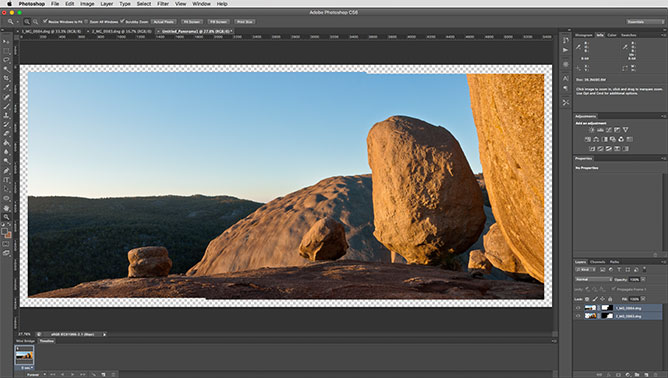
If this happens you have two options. Either crop your image tightly and work with what you’ve got or utilize Photoshop’s content-aware fill to fill in these areas. Content-aware fill isn’t perfect, but it does give you a great starting point from which you can work from.)
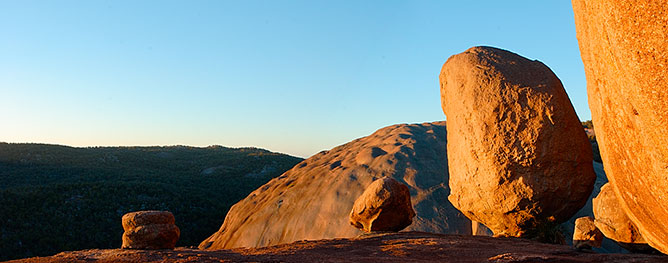
I think you’d agree that the results speak for themselves… I hope you found this tutorial to be helpful and informative. If you have any further questions that I haven’t answered, please don’t hesitate to ask them in the comments below.
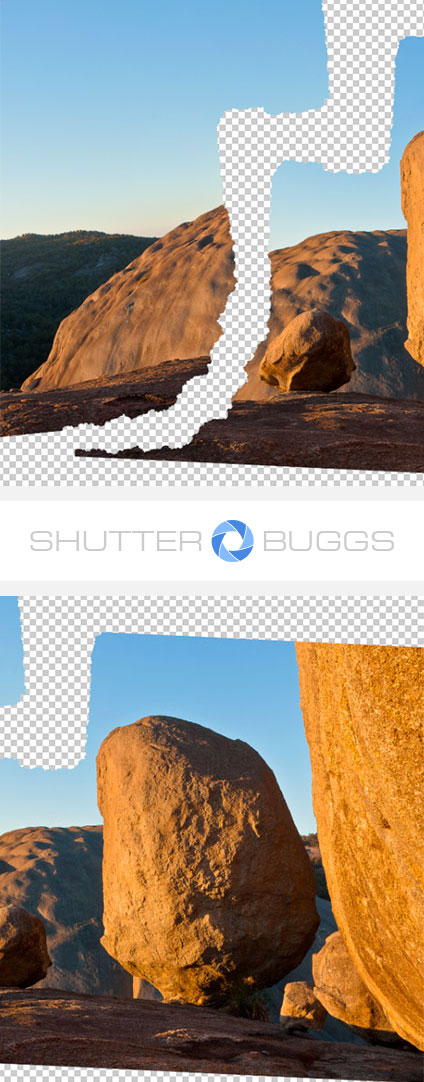
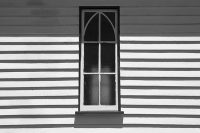
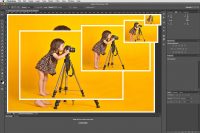
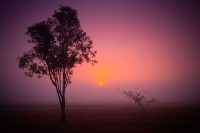










I used your instructions to stitch together scanned portions of a document (a class photo) too large to fit in the scanner at once. It worked great, even in the CS4 I have. This was my first ever use of Photoshop, which shows that your explanation is good!
Thank you Peter, I really appreciated reading your comments and glad that you found my tutorial helpful 🙂
Very helpful video. I was able to stitch together two partial scans of a 4×5 negative and stitch them into a complete image. Thanks!
You’re welcome Michael, I’m happy you found my tutorial useful.
I have just 2 overlapped images. I want to stitch them but photoshop can’t stitch them automatically, ther’s a way to suggest the way to stitch images manually? Thanks, Roberto
How many images will Photomerge in Photoshop stitch together? I have an area of 60,000 sq. inches and took just under 500 images to cover it all. I want to make a map of that area. Does Photoshop have the capacity to stitch them all together?
Hi Bryan,
Thank you for your question. As far as I’m aware there aren’t limitations on how many images you can stitch together, however you will be restricted based on your computers processing power and ability to handle multiple large file sizes.
For example your CPU, RAM and available hard drive space will all play an important role. With this knowledge you will also need to customize Photoshop’s Performance setting (under preferences) so that it is capable of handling larger files sizes. Changing Photoshop’s allocated memory usage and active scratch disks will improve your processing power.
For more information please view this video https://www.youtube.com/watch?v=JBSra8sbLMA
Good luck 🙂
In your article you show a photo that has been torn (separated) with no overlap. However, you discussion is only for cases where there is overlap. I am looking for a no overlap case, such as scanning a pattern from a magazine where the pages don’t overlap. This is (all too) common in woodworking magazines.
I think I may have to use a two layer approach, but is there any better solution (other software)?
Unfortunately, if you have images or scans that don’t overlap you’ll have to recreate those missing areas which can be difficult. However, there are tools you can use to assist in the creation process such as the clone stamp and content-aware fill which I have utilised in the tutorial below that you may find useful.
https://www.shutterbuggs.com/how-to-make-a-panorama-in-photoshop/